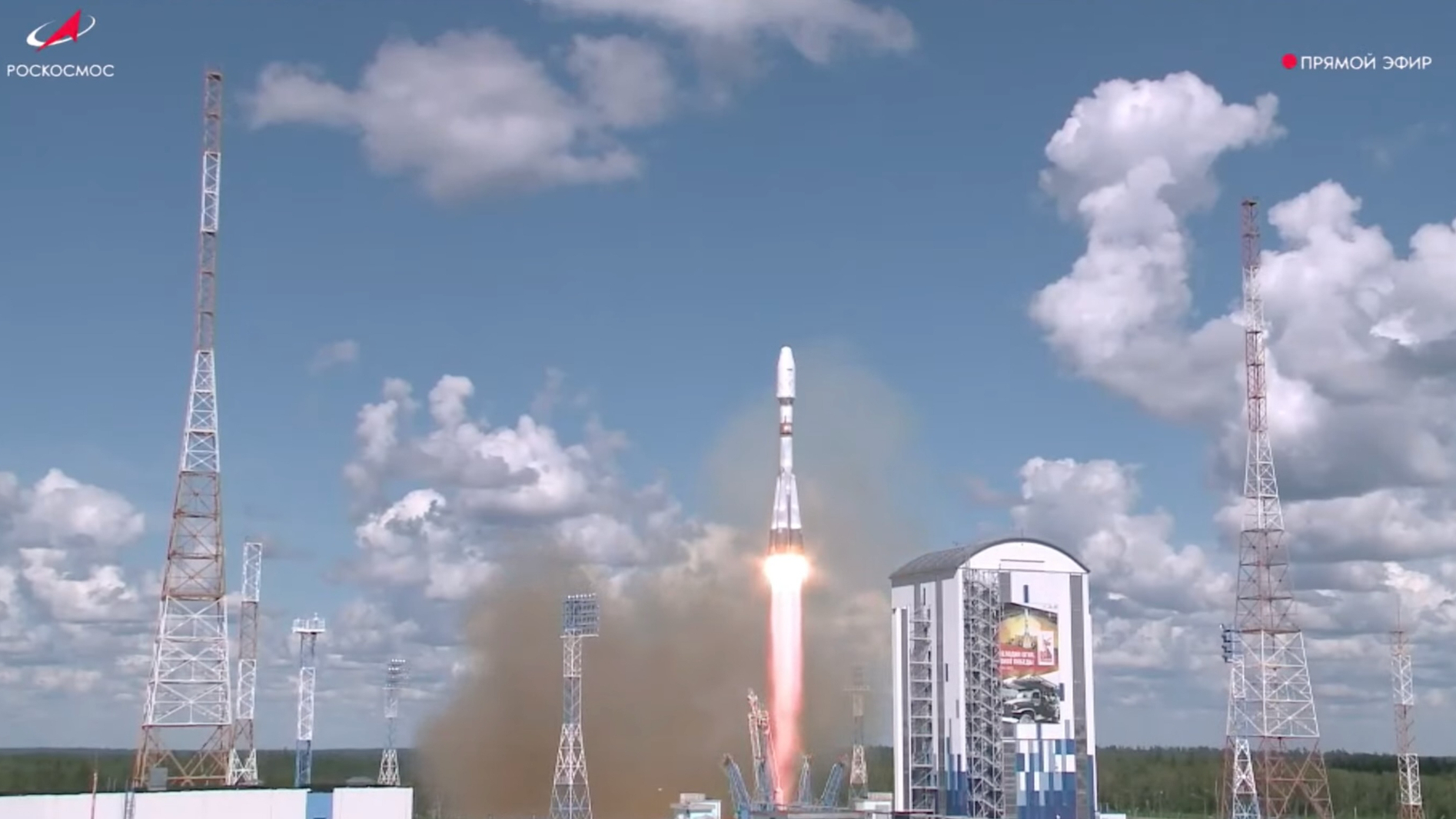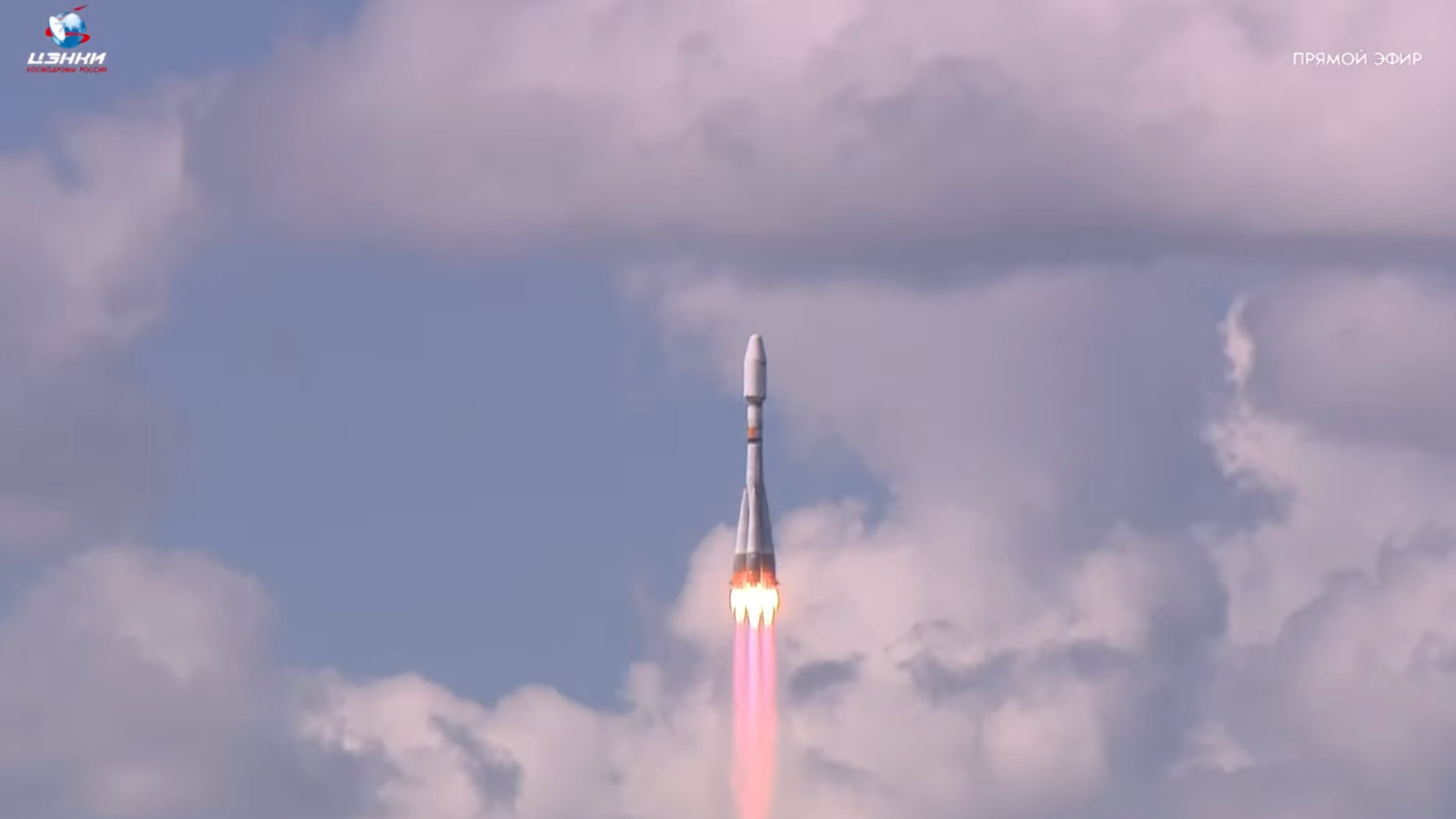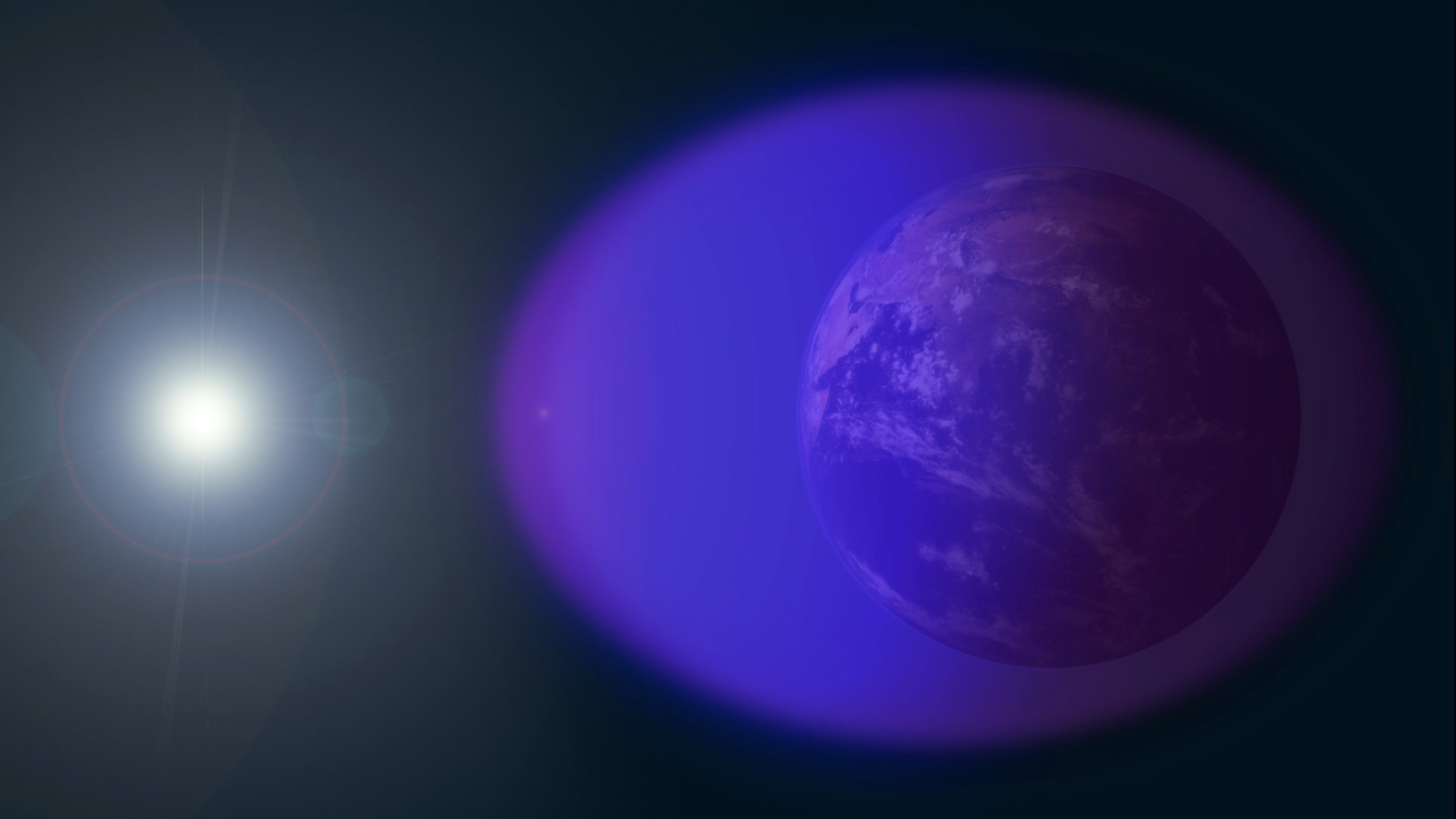Russia launches satellite for Iran toward orbit alongside 2 space weather probes (photos)
Liftoff of the Iranian spacecraft and two Ionosfera-M satellites occurred at 1:54 a.m. ET on Friday (July 25).

Two Russian space weather satellites are on their way to orbit, along with an Iranian spacecraft and a passel of cubesats.
A Soyuz 2.1b rocket lifted off from Vostochny Cosmodrome in Siberia today (July 25) at 1:54 a.m. EDT (0554 GMT; 8:54 a.m. Moscow time), carrying Russia's Ionosfera-M 3 and 4 satellites toward Earth orbit. The Soyuz also carried 18 secondary payloads, according to RussianSpaceWeb.com, including an Iranian communications satellite called Nahid-2.
Everything went well in the early stages of the launch, which the Russian space agency Roscosmos streamed live. The webcast ended about 10 minutes after launch, however, so news of satellite deployments will have to come via updates from the agency.

The first two Ionosfera-M satellites launched from Vostochny in November 2024. Spacecraft 3 and 4 will round out the mini constellation, which flies about 509 miles (820 kilometers) above Earth.
"The quartet is designed to monitor space weather phenomena, such as the impact of solar wind on the near-Earth space affecting civilian and military systems," RussianSpaceWeb wrote.
As their name suggests, the Ionosfera satellites focus on the ionosphere, a layer of Earth's atmosphere that ranges from about 50 to 400 miles (80 to 645 km) in altitude. The ionosphere interacts strongly with the sun, which explains the layer's name: its atoms and molecules are ionized (have had electrons stripped away) by solar radiation.
Ionosfera-M 3 and 4 are headed for an orbital plane perpendicular to that of their two brethren, "thus greatly expanding the three-dimensional coverage of the Earth's magnetosphere," according to RussianSpaceWeb. "The second pair would also include for the first time the Ozonometr-TM instrument for measuring levels of ozone in the upper atmosphere."
Breaking space news, the latest updates on rocket launches, skywatching events and more!

The 17 cubesats flying on the Soyuz this morning are all Russian-built and will conduct remote-sensing and other work in orbit.
One of them is a 16U cubesat and the other 16 are 3U craft, according to RussianSpaceWeb. A "U" is the standard cubesat unit; it consists of a cube measuring 10 centimeters (about 4 inches) on a side.

Michael Wall is a Senior Space Writer with Space.com and joined the team in 2010. He primarily covers exoplanets, spaceflight and military space, but has been known to dabble in the space art beat. His book about the search for alien life, "Out There," was published on Nov. 13, 2018. Before becoming a science writer, Michael worked as a herpetologist and wildlife biologist. He has a Ph.D. in evolutionary biology from the University of Sydney, Australia, a bachelor's degree from the University of Arizona, and a graduate certificate in science writing from the University of California, Santa Cruz. To find out what his latest project is, you can follow Michael on Twitter.
You must confirm your public display name before commenting
Please logout and then login again, you will then be prompted to enter your display name.
